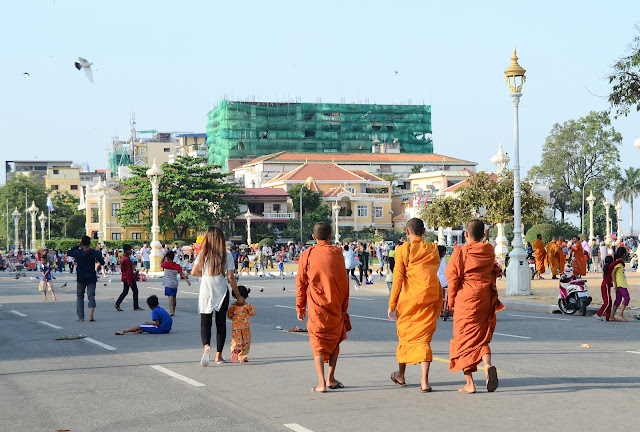Phnom Santuk is a holy site situated halfway between Phnom Penh and Angkor Wat. It's just outside the village of Kompong Thom where we spent one night before heading to Angkor Wat.
To reach the vista at Phnom Santuk, you must climb the 809 step stone stairway.
These friendly faces will keep you motivated. They line the stairway on each side, every step of the way. At the top of the mountain, you'll find several temples of varying styles and age. Check back this week for more. Photos taken in December 2016.

































